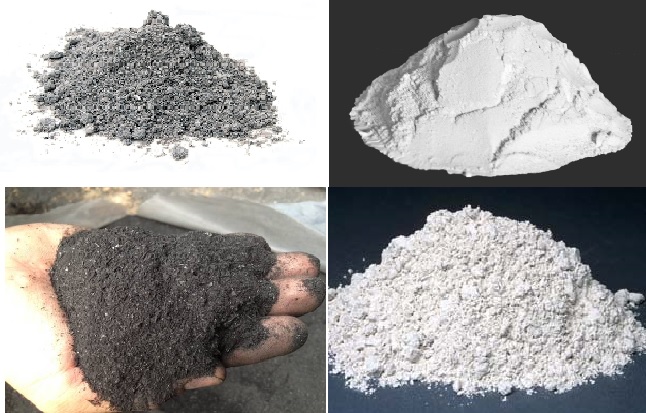Mineral admixtures play an important part in making of High Strength Concrete systems. Before going to mineral admixtures, I will clarify the difference between admixtures and additives
Concrete admixtures vs additives:
Anything which is added during grinding stage which has some special effect on fresh and hardened properties of concrete while on the other hand admixture is added during mixing stage of concrete making.

Admixtures are also classified into two major types
- Chemical Admixtures
- Mineral Admixtures
Mineral Admixtures:
Mineral Admixtures include mainly Silica Fume (SF), Fly Ash (FA), different kind of ashes such as Rice Husk Ash (RHA), Bagasse Ash, Waste Paper Sludge Ash (WSA) and also different kind of slags including Blast Furnace Slag (BFS) etc. Different mineral admixtures have different size particles and also have different surface morphology. Electron Microscopy of some mineral admixtures particles along with cement particles is shown.
photo source: engineeringintro.com
Mineral admixtures further are divided into two types
- Inert mineral admixtures
- pozzolanic mineral admixtures
Inert Mineral Admixtures:
Materials which in crystalline form having a well-defined crystal structure. Si02 present in crystalline material is not available for pozzolanic reaction
Pozzolanic Mineral Admixtures:
Si02 present in amorphous materials reacts with calcium hydroxide produced during cement hydration and, in turn, produces CSH gel which is a stronger product as compared to calcium hydroxide. This particular reaction is called pozzolanic reaction.
“Pozollanic reaction is between amorphous Si02 and CH”
Properties of Some well know mineral admixtures:
Silica Fume
Premium (white) Standard (grey) Silica Fume photo source: marginup.com
Silica Fume is very frequently used in cement-based materials. In general silica fume is very rich in amorphous Si02, therefore, it is responsible for the significant pozzolanic reaction.
The main use of silica fume includes high strength dense microstructure, high heat of hydration etc. With all its advantages it has certain drawback as it induces high early shrinkage and should be used in cement based systems with care.
Lime Stone Powder (LSP)
Lime Stone Powder. photo Source: hydratedlime
Limestone powder basically is inert mineral admixture, however, there is an evidence that it improves early strength because of its physical packing effect and in addition it offers some sites for preferential precipitation of hydration products. In research, it has been proven that use of LSP in combination of flyash improves the response of cementitious systems.
You can read more here.
Comments are closed.